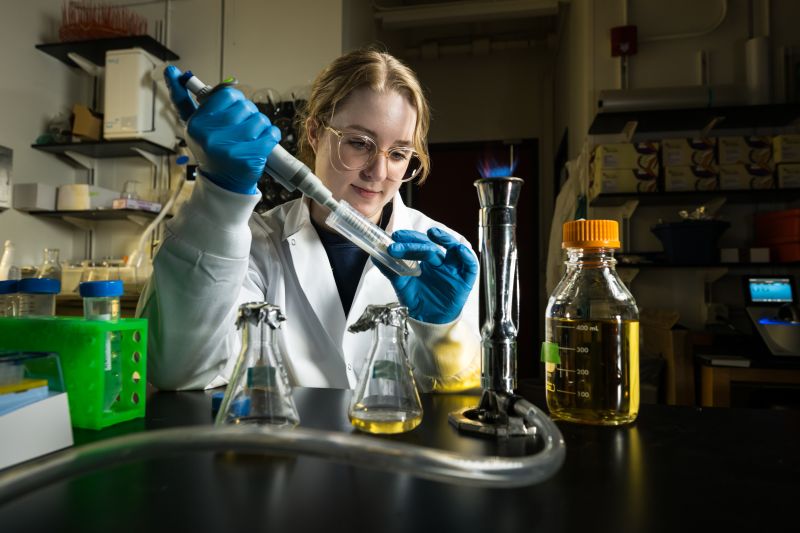
Tiny lenses grown from bacteria and enzymes may help doctors see inside cells
A team of researchers supported by the U.S. National Science Foundation has successfully made self-growing microlenses using bacteria and enzymes found in sea sponges. Because the microlenses are created by bacterial cell factories that function at standard temperatures and pressures, they are less expensive to produce — and they are exceptional at focusing light into very bright beams. The microlenses could allow for higher-resolution image sensors that go beyond current capabilities, potentially allowing doctors to more clearly see tiny structures inside cells.
In nature, sea sponges mineralize silica-based glass at a cellular level to create their intricate and strong glass skeletons. The researchers replicated that mechanism in a lab setting. Their research was published in Proceedings of the National Academy of Sciences
"This research is the first to engineer light-focusing properties into bacteria cells, and I am excited to explore the different possibilities that our work has opened up," says one of the study's authors and University of Rochester researcher Anne S. Meyer.

Credit: Photo by J. Adam Fenster/University of Rochester
Microlenses, typically the size of a single cell, are designed to capture and focus or manipulate light into intense beams at a microscopic scale. The development of traditional microlenses has previously required complex, expensive machinery and extreme temperatures or pressures to achieve the desired optical effects. Sea sponge microlenses require none of the traditional nanofabrication machinery, allowing for more portable microlens fabrication in a variety of circumstances — including outer space.
The engineered bacteria from Meyer's lab remain alive for several months after glass encapsulation, making them living optical devices that could be used to sense and respond to their environment by changing their optical properties.
"Using data-driven mathematical modeling and bio-inspired materials, these researchers have achieved something new in microscopic optics that could enable new capabilities in medical science, low-gravity environments and more," says Zhilan Feng, program director in the NSF Division of Mathematical Sciences, which supported the research.
Distribution channels: Science
Legal Disclaimer:
EIN Presswire provides this news content "as is" without warranty of any kind. We do not accept any responsibility or liability for the accuracy, content, images, videos, licenses, completeness, legality, or reliability of the information contained in this article. If you have any complaints or copyright issues related to this article, kindly contact the author above.
Submit your press release